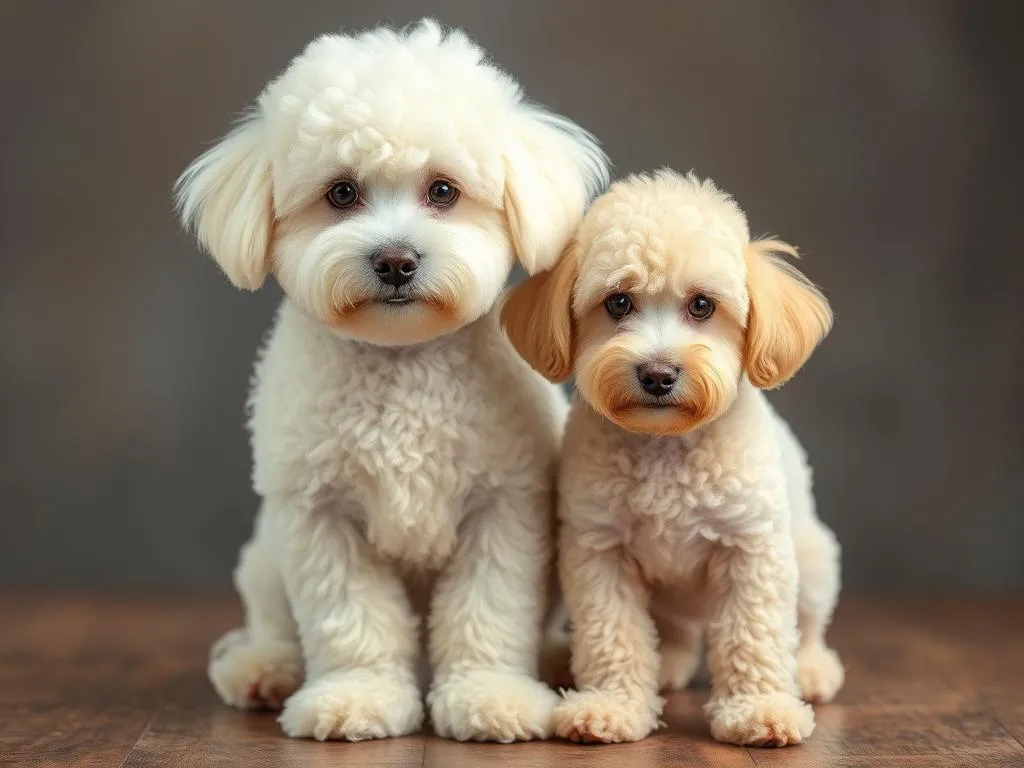
Introduction
In the ever-evolving world of canine companions, choosing the right breed can be a daunting task for potential pet owners. Among the myriad options available, the Bichon Frise and the Poodle stand out as two beloved breeds known for their charm and affection. Understanding the differences and similarities between these two breeds can significantly impact your decision, ensuring that you find a furry friend that fits seamlessly into your lifestyle.
Overview of the Bichon Frise
History and Origin
The Bichon Frise traces its roots back to the Mediterranean region, believed to have originated from the Tenerife dog. This breed was cherished by European nobility, particularly in France and Italy, where they were often portrayed in paintings of the era. Their name, “Bichon,” translates to “small dog” in French, encompassing a group of toy breeds that share similar characteristics. Over the years, the Bichon Frise has maintained its reputation as a companion dog, well-loved for its playful demeanor and affectionate nature.
Physical Characteristics
The Bichon Frise is a small breed, typically weighing between 12 to 18 pounds and standing about 9.5 to 11.5 inches tall at the shoulder. One of its most distinctive features is its fluffy, curly coat, which is usually white but can also come in shades of apricot or cream. This breed’s expressive eyes and black nose add to its charming appearance. Regular grooming is essential to maintain its coat, which can mat easily if not tended to.
Temperament and Personality
The Bichon Frise is known for its friendly and playful temperament. This breed is highly social, often thriving on companionship and interaction with its family. They are well-suited for families with children and can get along well with other pets. Their cheerful disposition makes them excellent companions, often bringing joy and laughter to their households.
Health Considerations
While generally healthy, the Bichon Frise can be prone to certain health issues such as allergies and dental problems. Regular veterinary check-ups and dental care are crucial for their well-being. Typically, they have a lifespan of 14 to 15 years, which is relatively long for small dog breeds. Maintaining a healthy diet and regular exercise are essential for their longevity.
Overview of the Poodle
History and Origin
The Poodle has a rich history, originally bred in Germany as a water retriever. Its name derives from the German word “Pudel,” meaning “to splash in water.” The breed gained significant popularity in France, where it was refined and became a favorite among nobility. Poodles are known for their intelligence and versatility, excelling in various dog sports and activities, making them a favored choice for many dog enthusiasts.
Physical Characteristics
The Poodle is unique for its three size variations: Standard, Miniature, and Toy, allowing for a broader range of choices for potential owners. The Standard Poodle can weigh between 40 to 70 pounds and stands over 15 inches tall, while Miniature Poodles typically weigh 10 to 15 pounds and stand between 10 to 15 inches. Toy Poodles are the smallest, weighing about 4 to 6 pounds and standing under 10 inches.
Poodles are renowned for their curly, hypoallergenic coat which comes in various colors, including white, black, apricot, and gray. Their elegant stature and distinctive coat make them a striking presence in any setting. Grooming is a significant commitment, as regular trimming is necessary to prevent matting and maintain their appearance.
Temperament and Personality
The Poodle is celebrated for its intelligence and loyalty. Known to be highly trainable, they often excel in obedience training and various canine sports. Their energetic nature requires regular exercise, making them suitable for active families. Poodles are generally friendly, making them good companions for children and other pets, but their intelligence and energy can sometimes lead to mischief if not properly managed.
Health Considerations
Poodles can be predisposed to certain health issues, such as hip dysplasia and skin conditions. Regular health screenings and a balanced diet are vital for their well-being. The lifespan of a Poodle typically ranges from 12 to 15 years, depending on the size, with Standard Poodles often having a shorter lifespan compared to their smaller counterparts.
Bichon Frise vs Poodle: Key Comparisons
Size and Appearance
When comparing the Bichon Frise and the Poodle, size is one of the most notable differences. The Bichon Frise is a small breed, while the Poodle offers a range of sizes from Toy to Standard. This variety allows potential owners to select a Poodle that fits their living situation and preferences. In terms of appearance, both breeds have distinct coats that require regular grooming, with the Bichon Frise being characterized by its fluffy coat, while the Poodle boasts a more elegant, curly coat.
Temperament and Behavior
Both breeds exhibit friendly and social behaviors; however, their energy levels differ. The Bichon Frise tends to have a more laid-back demeanor, while the Poodle is often more energetic and requires more exercise. This difference can influence your choice, especially if you lead an active lifestyle or prefer a more relaxed companion.
Grooming Needs
Grooming is a significant commitment for both the Bichon Frise and the Poodle. The Bichon requires regular brushing to prevent matting and maintain its fluffy appearance, while the Poodle requires professional grooming every few months to keep its coat in top condition. The costs associated with grooming can add up, so potential owners should consider this when choosing between the two breeds.
Training and Intelligence
When it comes to training, Poodles are often regarded as one of the most intelligent breeds, excelling in obedience and agility training. They thrive on mental stimulation and can quickly learn commands and tricks. Bichon Frises, while also trainable, may not match the same level of intelligence as Poodles. However, they are generally eager to please, making training a rewarding experience.
Exercise Requirements
The Poodle requires more exercise compared to the Bichon Frise. Regular walks, playtime, and mental stimulation are essential for keeping a Poodle happy and healthy. In contrast, the Bichon Frise enjoys play but may be content with shorter walks and indoor play. Understanding these exercise needs can help you decide which breed aligns better with your lifestyle.
Choosing the Right Breed for You
Lifestyle Considerations
When deciding between the Bichon Frise and the Poodle, consider your lifestyle. If you are an active individual or family, a Poodle may be the better option. This breed thrives in environments that allow for regular exercise and mental stimulation. However, if you prefer a more laid-back lifestyle, the Bichon Frise may be a better match, as they are content with shorter walks and play sessions.
Living Conditions
Your living situation also plays a crucial role in your decision. Bichon Frises are well-suited for apartment living due to their small size and lower exercise needs. On the other hand, Poodles, particularly the Standard variety, may require more space and are better suited for homes with yards where they can run and play.
Family Compatibility
Both breeds can be excellent family pets, but their compatibility may vary based on family structure. Bichon Frises are particularly good with younger children due to their playful nature, while Poodles can also thrive in family settings, especially if they are provided with adequate exercise and stimulation. Consider the ages of children in the household and the activity levels of family members when making your choice.
Conclusion
In summary, both the Bichon Frise and Poodle have unique attributes that make them beloved companions. The Bichon Frise is a small, friendly breed that suits families looking for a playful yet relaxed pet, while the Poodle offers intelligence, versatility, and a range of sizes, making it ideal for active households. Ultimately, the decision should be based on individual preferences, lifestyles, and the specific needs of each breed. Understanding these factors will guide you in choosing the right breed that complements your life while providing you with years of companionship and joy.









